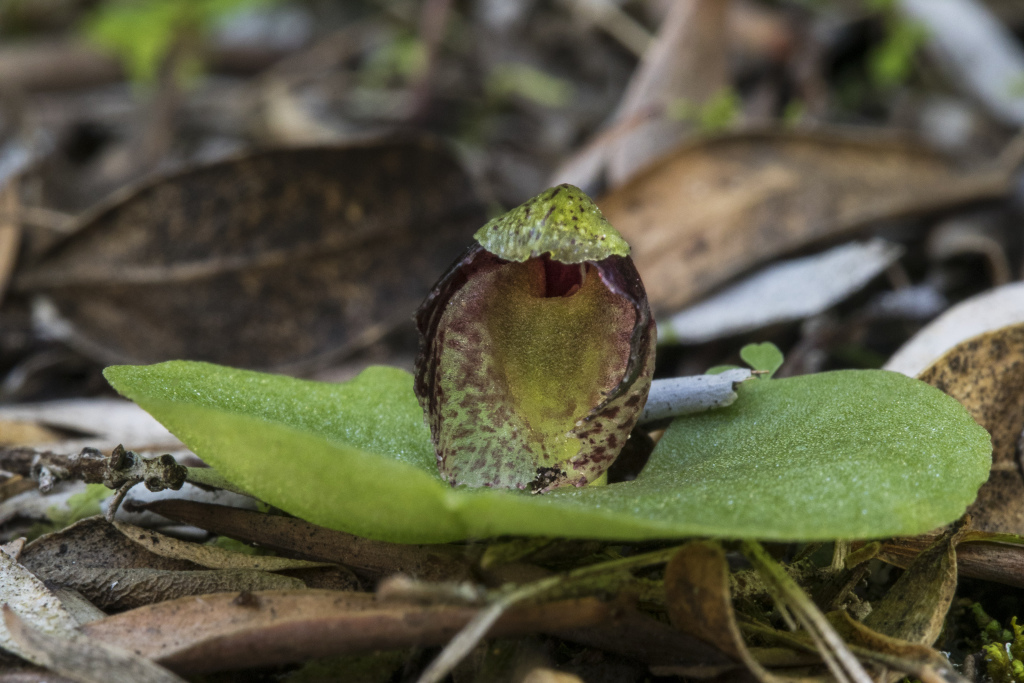Corybas despectans
D.L.Jones & R.C.NashLeaf circular to cordate, sometimes lobed, green on both surfaces, 17–32 mm long and wide. Flower reddish-purple, pedicel inconspicuous; dorsal sepal greenish-grey with purple striations, spathulate to oblong, concave, keeled, erect in lower half then curving gently through c. 60°, c. 8 mm long, apex acute or obtuse, often irregularly notched; lateral sepals narrowly acute, gradually tapering, fused at base, apex entire, c. 5 mm long; petals narrow, slightly curved, tapering, winged at base, joining column, c. 3 mm long, tips often forked. Labellum longer than dorsal sepal, 8–11 mm long when flattened out, tube erect, equal in length to lamina, auricles very small and opening downwards, hidden by base of petals; lamina abruptly decurved through 90°, expanded, almost circular above base, reddish with conspicuous veins, lateral margins slightly toothed and directed forwards; central boss flat and almost triangular, inconspicuous; callus consisting of c. 4 raised divergent plates, occasionally with minute teeth. Column minutely winged. Flowers Jul.–Aug. (self–pollinating).
GleP, Brid, VVP, GipP, OtP. Also WA, SA. Known from the Portland area in the far west, and an isolated occurrence at Cape Schanck on the Mornington Peninsula. Colony-forming, occurs in sandy soils, often in the shelter of bracken swards.
In some populations of C. despectans (e.g. Cape Schanck), the labellum margins can vary from directed forwards to flared quite widely, the latter plants being similar to the South Australian species C. expansus D.L. Jones. Within populations of the widespread C. incurvus, some smaller-flowered plants with relatively narrow dorsal sepals may occur. These can resemble C. despectans but are readily distinguished by the strongly incurved labellum margins. Even at the small end of the size-range, flowers of C. incurvus are larger than typical C. despectans and are not self-pollinating.
Entwisle, T.J. (1994). Orchidaceae. In: Walsh, N.G.; Entwisle, T.J., Flora of Victoria Vol. 2, Ferns and Allied Plants, Conifers and Monocotyledons, pp. 740–901. Inkata Press, Melbourne.
 Spinning
Spinning


